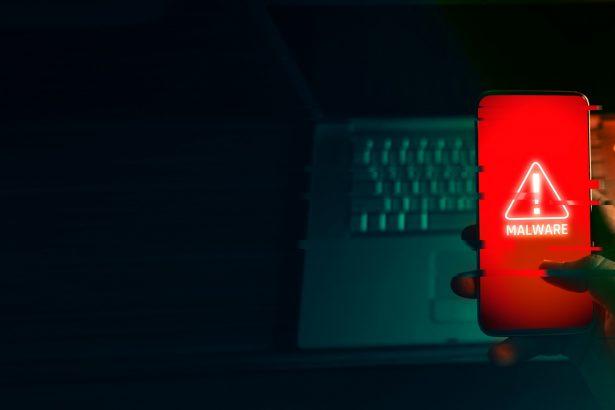PSLoramyra, also known as PSLoramyra virus, is a sophisticated piece of loader malware that infiltrates systems in an effort to deploy additional malicious payloads. It is designed to operate stealthily, avoiding detection by executing malicious code directly in memory, which is characteristic of “file-less” malware. This type of malware is highly concerning due to its stealthy behavior, ability to persist on infected systems, and its role in facilitating further infections or malicious actions.
Download SpyHunter Now & Scan Your Computer For Free!
Remove this and any other malicious threats to your system by scanning your computer with SpyHunter now! It’s FREE!
What is PSLoramyra?
PSLoramyra is a loader-type malware, meaning it primarily serves to load and deploy other malicious components onto the compromised system. The infection process involves complex techniques to evade detection, often using PowerShell, VBS, and BAT scripts. Unlike traditional malware that is installed as files on a system, PSLoramyra executes its payload directly in memory, making it harder to detect and remove.
PSLoramyra’s infection chain begins with a PowerShell script. This script contains the necessary components for executing the loader and continues by launching a VBScript, which ensures that the infection persists and progresses. The malware is capable of modifying system settings, using Windows Task Scheduler to run scripts periodically—typically every two minutes—further ensuring its continued presence on the machine.
In one notable attack, PSLoramyra exploited the legitimate Windows process RegSvcs.exe, a part of the .NET Framework, to inject malicious code and load additional payloads. This method of leveraging trusted system processes for malicious purposes is a hallmark of advanced malware techniques.
Impact of PSLoramyra
Once a system is compromised, PSLoramyra can cause significant damage. Loader malware is often used to introduce various types of malicious payloads, such as:
- Trojans: These can be used to steal sensitive information like login credentials, banking details, or even personal identity data.
- Ransomware: The malware could facilitate the installation of ransomware, which encrypts user files and demands payment for decryption keys.
- Botnet Recruitment: Compromised devices may be added to a botnet, which can then be used for various malicious purposes, including DDoS attacks.
The consequences of a PSLoramyra infection can lead to severe privacy violations, financial losses, and data theft, making it critical to detect and remove the malware as soon as possible.
How PSLoramyra Spreads
PSLoramyra typically spreads through phishing attacks, malicious email attachments, malvertising, and social engineering. These tactics aim to deceive the victim into opening an infected file or clicking on a malicious link. Common methods of delivery include:
- Infected email attachments: Users may receive emails containing malicious files, such as ZIP archives, PDFs, or Office documents with embedded macros that execute the malware when opened.
- Malicious links: These can appear in emails, social media posts, or even on fake websites, prompting the victim to download infected files.
- Software cracks: The malware may also be bundled with pirated software, which is often distributed through illegal download sites or peer-to-peer networks.
- Drive-by downloads: These infections occur when users visit a compromised website that automatically downloads malicious scripts to their systems without any user interaction.
Symptoms of Infection
PSLoramyra infections are designed to be stealthy, so users may not immediately notice any symptoms. However, some potential signs of infection include:
- Slow system performance
- Unusual network activity or system processes
- Suspicious emails or files appearing on the system
- Unexpected pop-up advertisements or redirects when browsing the web
- Increased CPU usage due to scripts running in the background
Since PSLoramyra is file-less and operates entirely in memory, traditional antivirus scans may miss the infection unless they are specifically tuned to detect such threats.
Detection and Removal of PSLoramyra
Download SpyHunter Now & Scan Your Computer For Free!
Remove this and any other malicious threats to your system by scanning your computer with SpyHunter now! It's FREE!
To effectively remove PSLoramyra from a system, the use of an advanced malware detection tool is required. SpyHunter, a leading anti-malware tool, is capable of detecting and removing PSLoramyra from infected systems. Here's a step-by-step guide to removing PSLoramyra using SpyHunter:
- Download and Install SpyHunter:
- Go to the official SpyHunter website and download the software.
- Follow the installation instructions to set up the program on your system.
- Run a Full System Scan:
- Open SpyHunter and perform a full system scan. This scan will search for any files, scripts, or processes associated with PSLoramyra and other malware.
- SpyHunter will detect both visible files and hidden components in memory, including PowerShell scripts and injected payloads.
- Remove Detected Threats:
- After the scan, SpyHunter will present a list of detected threats.
- Review the list and allow the tool to remove all detected malware, including PSLoramyra and any additional payloads that may have been installed.
- Restart Your System:
- After the malware has been removed, restart your computer to ensure that all malicious processes are completely eliminated.
- Perform a Secondary Scan:
- Run another scan to ensure that no remnants of PSLoramyra are left behind and that your system is clean.
Preventive Methods
Once you have removed PSLoramyra from your system, it’s important to take preventive steps to avoid future infections. Here are some essential measures:
- Use Reliable Security Software: Ensure that you have a trusted antivirus and anti-malware tool like SpyHunter running on your system. Keep it up to date with the latest definitions.
- Enable System and Browser Security Features: Use firewalls, enable email filters to block spam, and configure your browser to block dangerous websites and downloads.
- Exercise Caution with Email Attachments and Links: Avoid opening email attachments from unknown senders or clicking on links in suspicious messages. Always verify the source before downloading or interacting with files.
- Keep Your Software Up to Date: Regularly update your operating system and software, including browsers, email clients, and any installed applications, to patch security vulnerabilities.
- Avoid Cracked Software: Do not download or install illegal software, as it often contains malware, including loaders like PSLoramyra.
- Use a VPN: When browsing the web, consider using a virtual private network (VPN) to hide your browsing activity and avoid malicious websites that may try to exploit security vulnerabilities.
Conclusion
PSLoramyra is a highly sophisticated loader malware that can cause significant damage by deploying additional malicious payloads. Its stealthy, file-less infection process and use of PowerShell and VBScript for execution make it difficult to detect and remove. However, with the right tools, such as SpyHunter, and by following good security practices, you can protect your system and prevent future infections.




